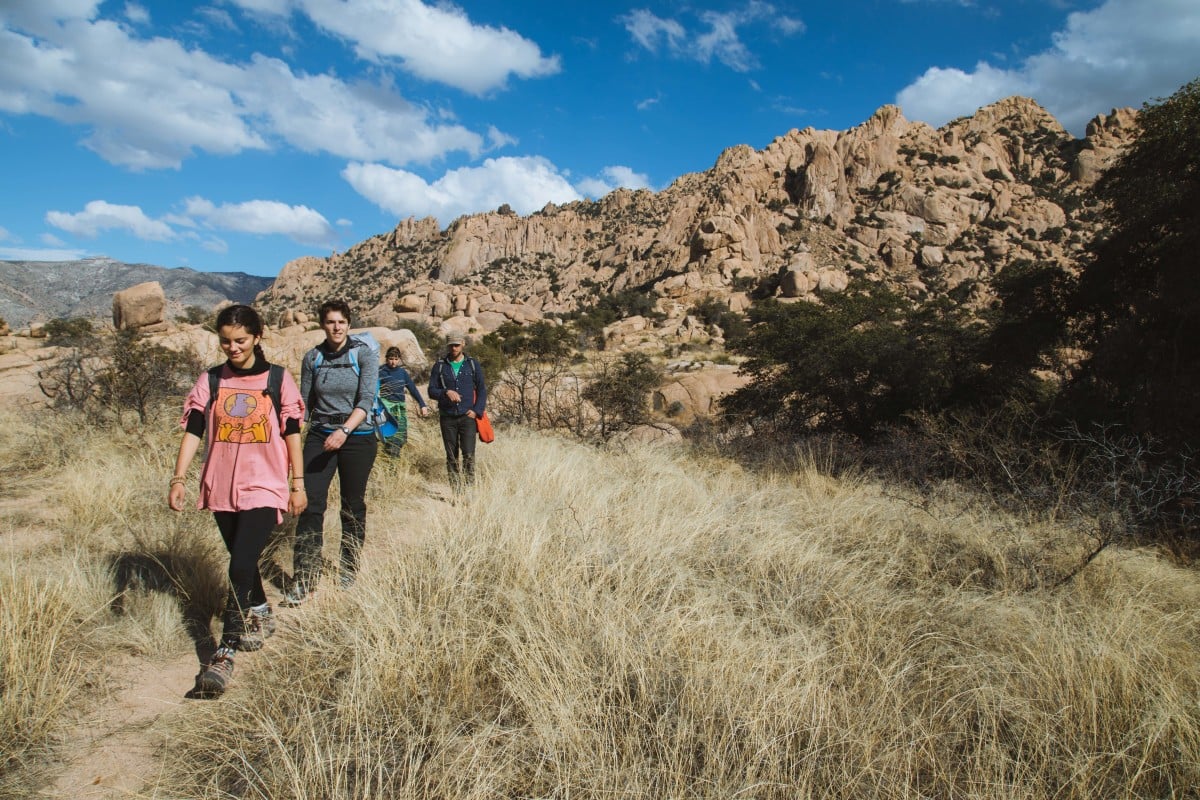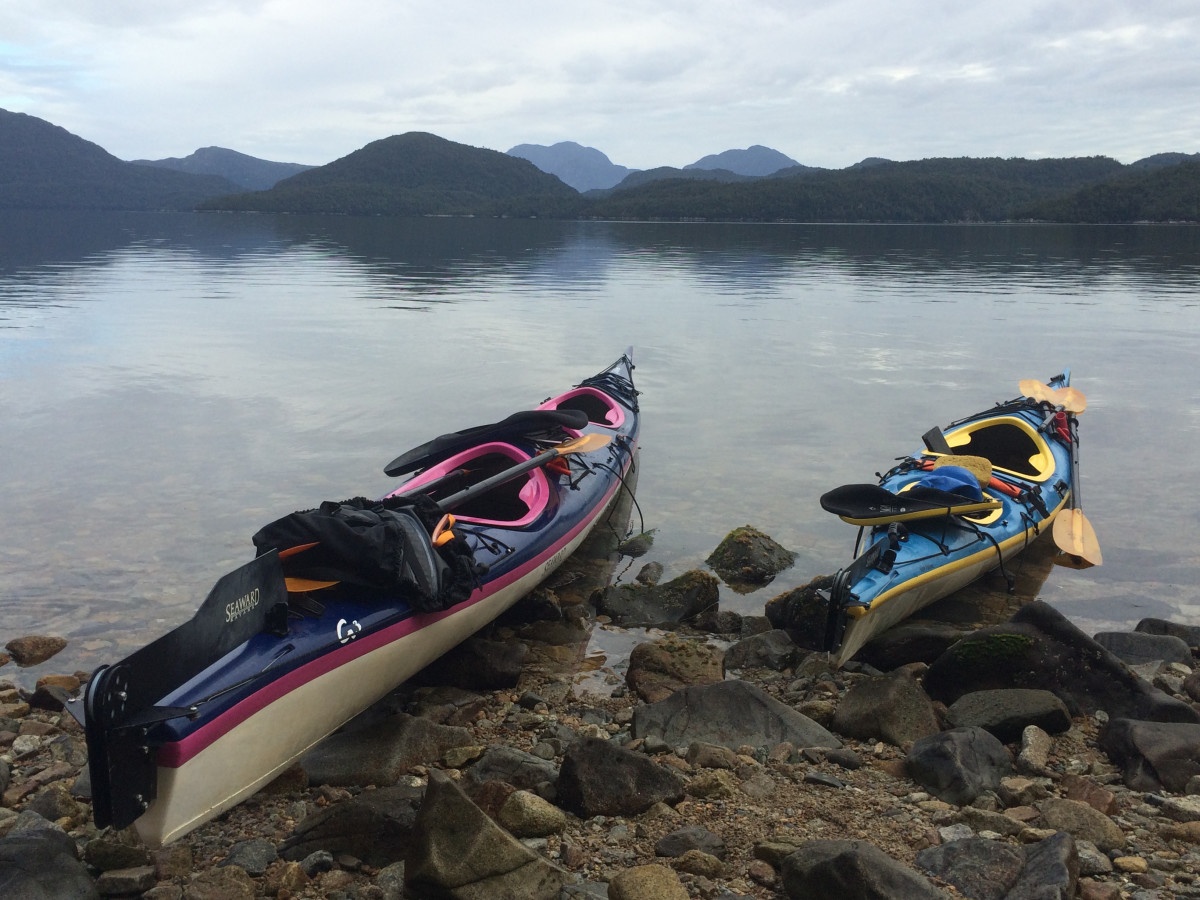
Some experienced campers’ favorite advice is “You should never wear cotton,” sometimes using the dramatic catchphrase “Cotton kills.”
The first NOLS courses in the Wind River Range vigorously stuck to the “no cotton” philosophy, wearing wool for every layer, head to toe and inside and out. You can imagine for yourself what a 1960s-era set of wool undergarments might have felt like.
Despite cotton’s negative reputation among some backpackers, the reality is that there are times when you should actually wear cotton in the outdoors (and it won’t kill you).
Choosing the Right Clothes for Your Trip
Just like any trip, bring the gear and clothing that matches your activities and the environment. Before you pack, think about:
- Where you’re going
- What you’re doing
- How long you’ll be out
The main reason people often avoid cotton for camping is that when it gets wet it stays wet. As field instructor and former NOLS expedition curriculum manager Jamie O’Donnell notes, “Cotton is hydrophilic, or water-loving, meaning that it dries slowly. Because it dries slowly, it makes us work harder to stay warm, as we must also warm the water in the wet fibers, which requires a lot of energy.”
Synthetics and wool, on the other hand are hydrophobic. Water does not attract to the fibers, which means they dry more quickly.
In cold environments in particular, it makes sense to avoid wearing material that makes you colder. For example, if you’re hiking in a place that’s rainy and has chilly temperatures, your primary goal will be to stay warm and dry. Wet clothing in a cold environment can lead to hypothermia, something you definitely want to avoid (read how here). If you are heading somewhere cold, wool or synthetic materials are an appropriate choice for that environment.
When Should I Wear Cotton?

The thing is, not every camping trip is going to take you somewhere cold or to high elevations. Cotton’s ability to stay wet and cool you down is ideal for environments that are hot, dry, and sunny. For example, a cotton shirt is a great choice if you’re taking a summer rafting trip, or if you’re planning a hike in a hot, dry desert. In these environments, your priority is to stay cool—that’s when cotton performs well.
In addition to keeping you cool, cotton also protects you from the sun. While a long-sleeved wool shirt might leave you sweating, a simple long-sleeved cotton shirt (like the old dress shirts you can find at a thrift store), are a great way to cover your skin from the sun. Plus, as instructor Ryland Gardner notes, for ocean travel cotton shirts work well as sun protection and “in the water it does not do damage to the reefs like sunscreen.”
Here are a few examples of when NOLS instructors recommend wearing cotton in the outdoors:
"Thin cotton/poly plaid pearl snap shirt, with the collar up, in the desert Southwest. Or in the Bighorn Mountains in Wyoming. Or any sunny summer course."—Allie Maloney
"Being on a river in the summertime. I loved having a long-sleeved cotton shirt on the Green River! Ditto for hiking the Grand Canyon."—Missy White
"I've worn a cotton shemagh [scarf] for the last couple years, pretty much all the time unless it's pouring rain. It's warm in the cold, and the sweat cools when it's warm. It's also very thorough sun protection. And wrap it around a puffy and it's a soft pillow at night."—Ben Fox
"We wear cotton on horsepacking courses for several reasons, but mainly comfort, function, and tradition. Cotton jeans don't chafe, and are durable for riding all day, shoeing horses, clearing trails, and the other varied tasks that are unique to horsepacking—my Prana climbing pants would be shredded in one day in the saddle…Horsepacking is a lot of work, but tends to be less sweaty than backpacking, for example, so breathability feels more important than 'moisture-wicking' ability. Don't fret—we still bring technical outerwear, puffy pants, and wool baselayers. I love the Western tradition, but when night falls you'll find me in my 800-fill down bag, not a canvas bedroll!"—Kate Sirianni
Learn about living in a desert environment like a pro on a Fall Semester in the Southwest or Fall Semester in Baja.
Written By
Molly Herber
Molly is a NOLS instructor and writer. She loves the smell of her backpack and does her best writing before 7:00 am. When she's not scouting the next post for the NOLS Blog, she's running and climbing on rocks in Wyoming. Follow her on Instagram @mgherber



